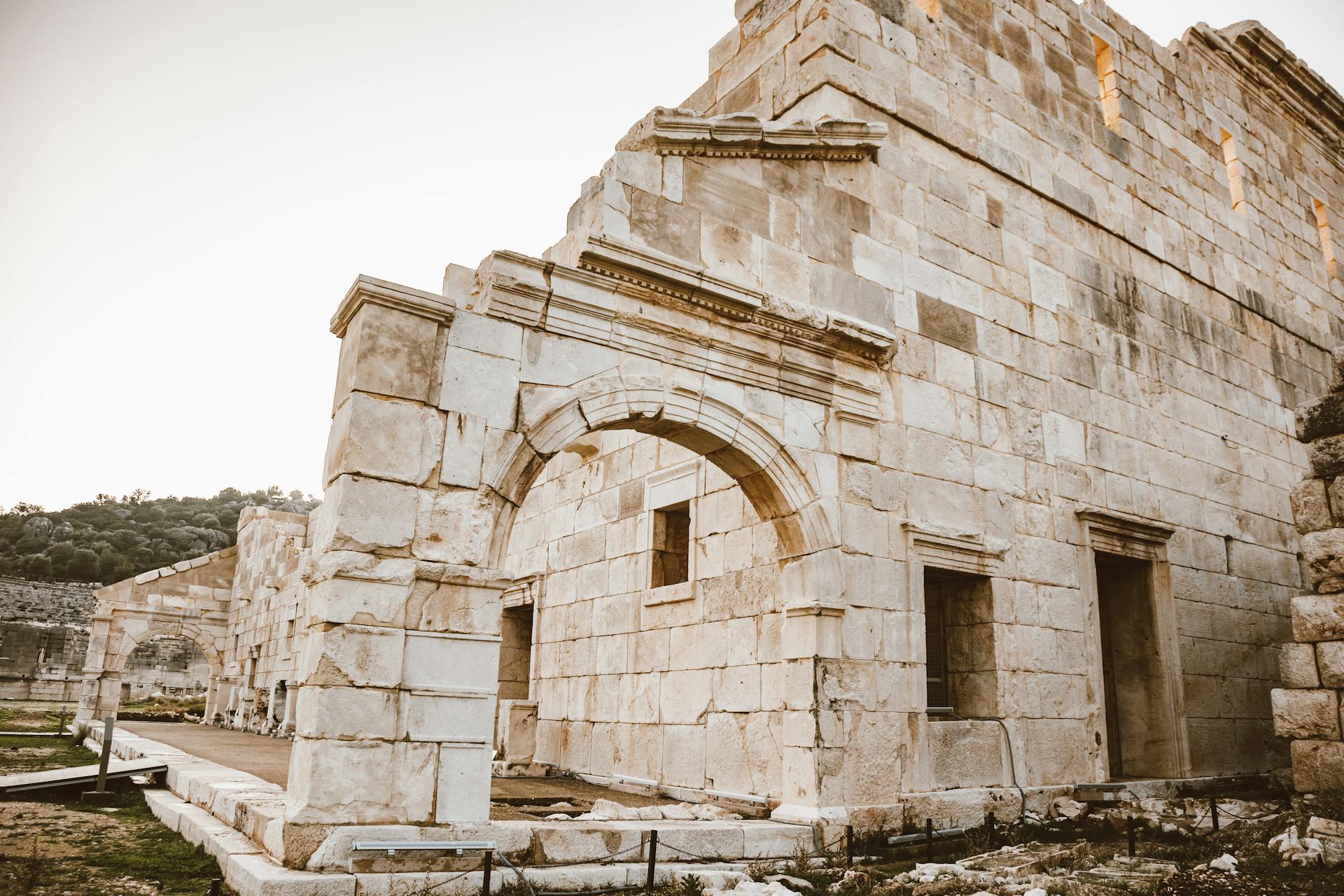
Dogs of Roman Britain were an integral part of the ancient Roman relationship, serving as loyal companions, hunting partners, and even status symbols. They were often depicted in Roman art and literature as symbols of wealth and power.
The Roman historian Pliny the Elder wrote about the various breeds of dogs that existed during Roman Britain, including the Laconian hound and the Molossus. These breeds were prized for their strength, speed, and agility.
Dogs played a crucial role in Roman Britain's hunting culture, with many breeds being specifically bred for hunting large game such as boar and deer. The Roman love of hunting was a key factor in the development of many dog breeds.
Consider reading: Good Dog Food for Hunting Dogs
Dogs in Roman Society
Dogs played an important role in ancient Roman society, bred as pets, guardians, for herding, hunting, and for war.
Many Romans appreciated the beautiful virtues of dogs, including loyalty, obedience, unconditional affection, nobility of soul, great intuition, and spontaneity in expressing their emotions.
Pliny the Elder called the dog "man's most faithful companion", highlighting their special bond with humans.
The Romans loved little dogs, called catuli and catellae, as domestic pets and developed close relationships with these canines.
Marcus Valerius Martial wrote an epigram to a tiny dog named Issa, showing the affection and connection between dogs and their owners.
Dogs were frequently "spoiled" with food, served in tasty and ample amounts, as humorously described in Petronius Arbiter's "Satyricon".
A black and very fat pet dog in the house of Trimalchio was fed so much food that it almost burst, highlighting the indulgent side of Roman dog ownership.
The Romans imported various dog breeds, including the Molossus of Epirus, the Vertragus, the Lacone, and the Cretan Mastiff, each with their unique characteristics and uses.
Economic and Cultural Impact
Dogs played a significant role in the Roman Britain economy, with hunting dogs being of value in export and trade.
Dog hides were another attribute of the Roman Britain economy, providing a valuable commodity.
The superior domestic dog breeds found in the Isles were a prominent export and source of trade, with the Irish wolfhound, English Mastiff, and Agassian being some of the most popular breeds.
Economic Contributions
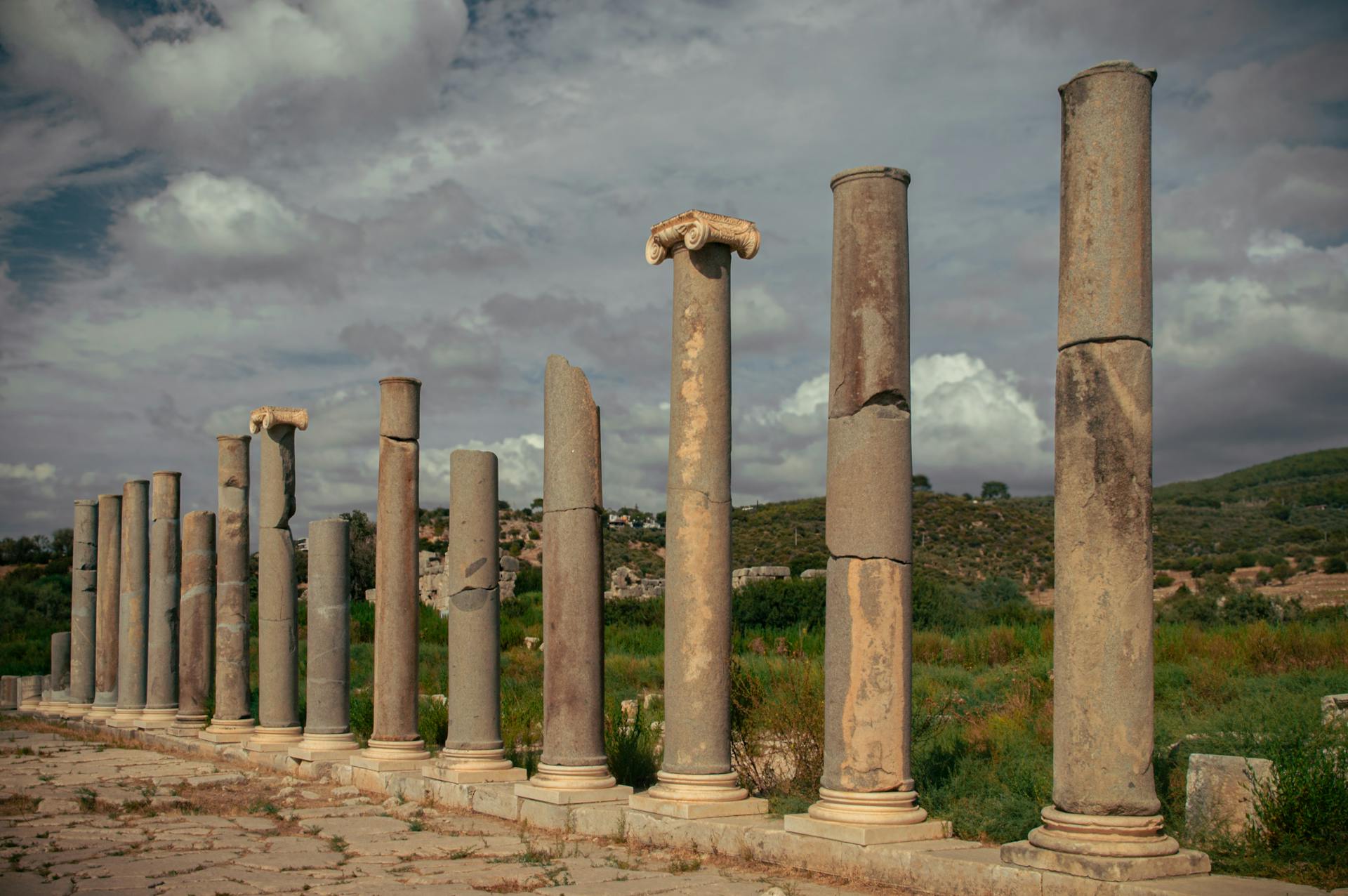
Roman Britain's economy was boosted by the export and trade of hunting dogs, which were highly valued for their skills and physical attributes. The Isles were home to superior domestic dog breeds that were in high demand.
The Irish wolfhound, English Mastiff (also known as pugnaces), and Agassian were some of the most popular breeds exported from Roman Britain. These breeds were not only sought after for their companionship but also for their meat and hides.
Dog hides were a significant attribute of the Roman Britain economy, providing a valuable resource for trade.
Cultural Significance
Dogs have been a significant part of various cultures, often appearing in religious imagery alongside gods and goddesses.
In ancient Roman worship, dogs were associated with protection, particularly for merchants sailing from the Rhine and Mosel to Britain.
The deity Nehalennia was frequently depicted with a lap-dog, which was believed to protect sailors on their journeys.
Placing figurines of dogs with the dead was thought to help souls with passage due to their connection to the underworld.
Dogs were seen as having a special role in funerary practices, with their presence believed to aid in the transition to the afterlife.
Roles and Activities
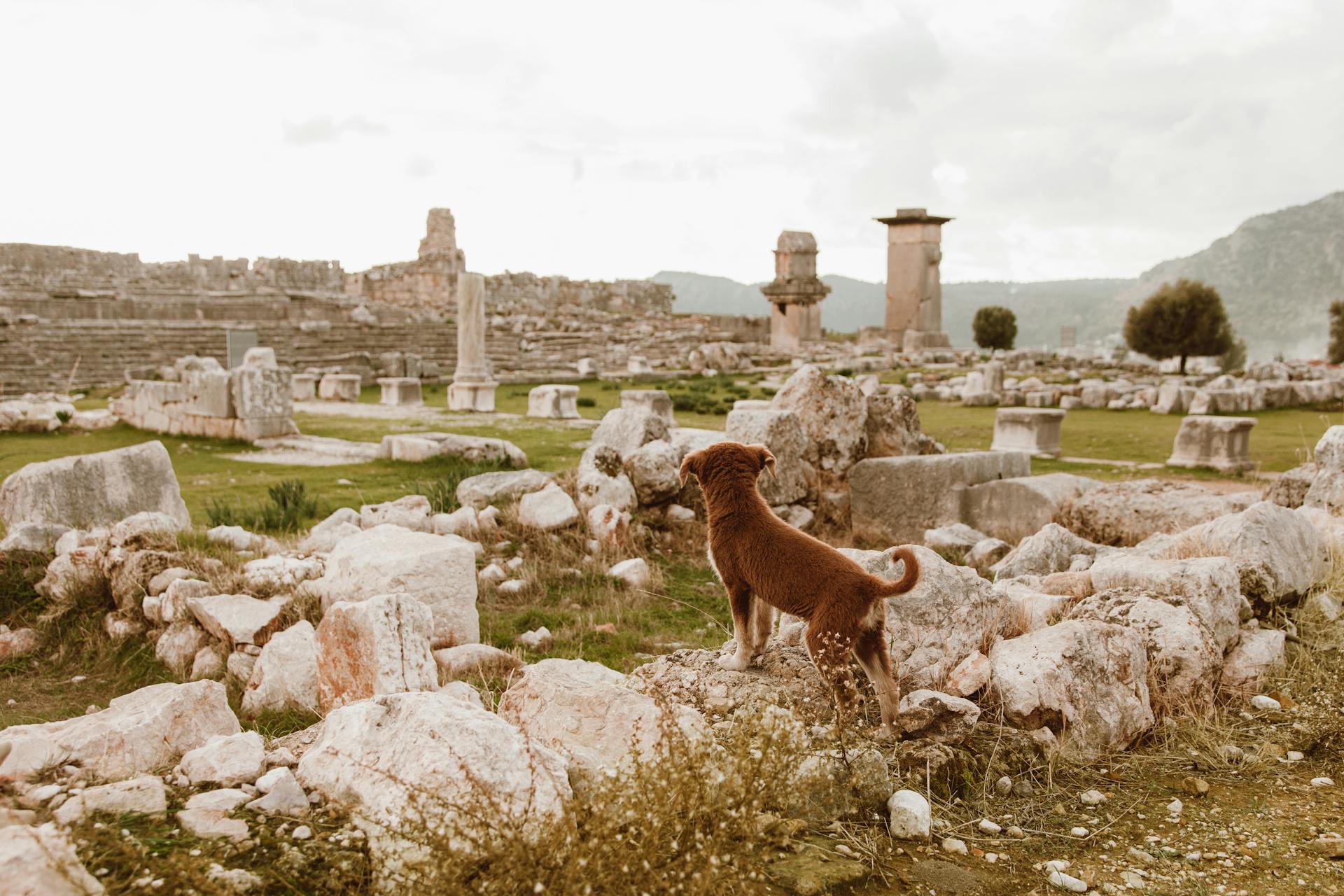
Dogs of Roman Britain were versatile animals, and their roles and activities reflect this versatility. They were used for hunting, as described by Strabo, who noted that British hunting dogs were not only physically superior but also clever.
In addition to hunting, these dogs were also used as herding and guard animals. The fact that Strabo mentions them in the same breath as the militarized Molossus of Epirus highlights their importance in various roles.
Protectors, Companions, Hunters
The ancient Romans had a deep appreciation for dogs, and they played a vital role in their society. Dogs were bred for various purposes, including guardians, herding, hunting, and war.
In particular, British hunting dogs were renowned for their physical superiority and intelligence. They were highly prized for their ability to track and hunt.
The Romans also valued the companionship of dogs, often keeping them as pets and developing close relationships with them. A famous example is the tiny dog named Issa, which belonged to a man named Publius and was described by the poet Marcus Valerius Martial.
Dogs were not just kept for companionship, but also for their hunting prowess. The Cretan Mastiff, a breed that may have been a cross between the Molosser and the Lacone, was used for hunting, and British hunting dogs were highly sought after for their skills.
Interestingly, a marble epitaph to a hunting dog named Margarita from Gaul was discovered in Rome, showcasing the importance of dogs in ancient Roman society.
War
War is a complex and multifaceted concept that has been a part of human history for thousands of years.
Dogs have been used in warfare for centuries, with various civilizations employing them in different ways. The Egyptians, Greeks, Persians, Sarmatians, Slavs, British, and Romans all used dogs in battle.
The Romans were particularly skilled at training dogs for war, modeling their tactics after those of other peoples. They used dogs for sentry duty, message relays, and even as a way to destroy enemy cavalry.
Roman war dogs were trained to obey complex verbal orders, respect the order of attack, and distinguish between friends and enemies based on smell and clothing. They were also fed by multiple legionaries to ensure they wouldn't be selective about who they accepted food from.
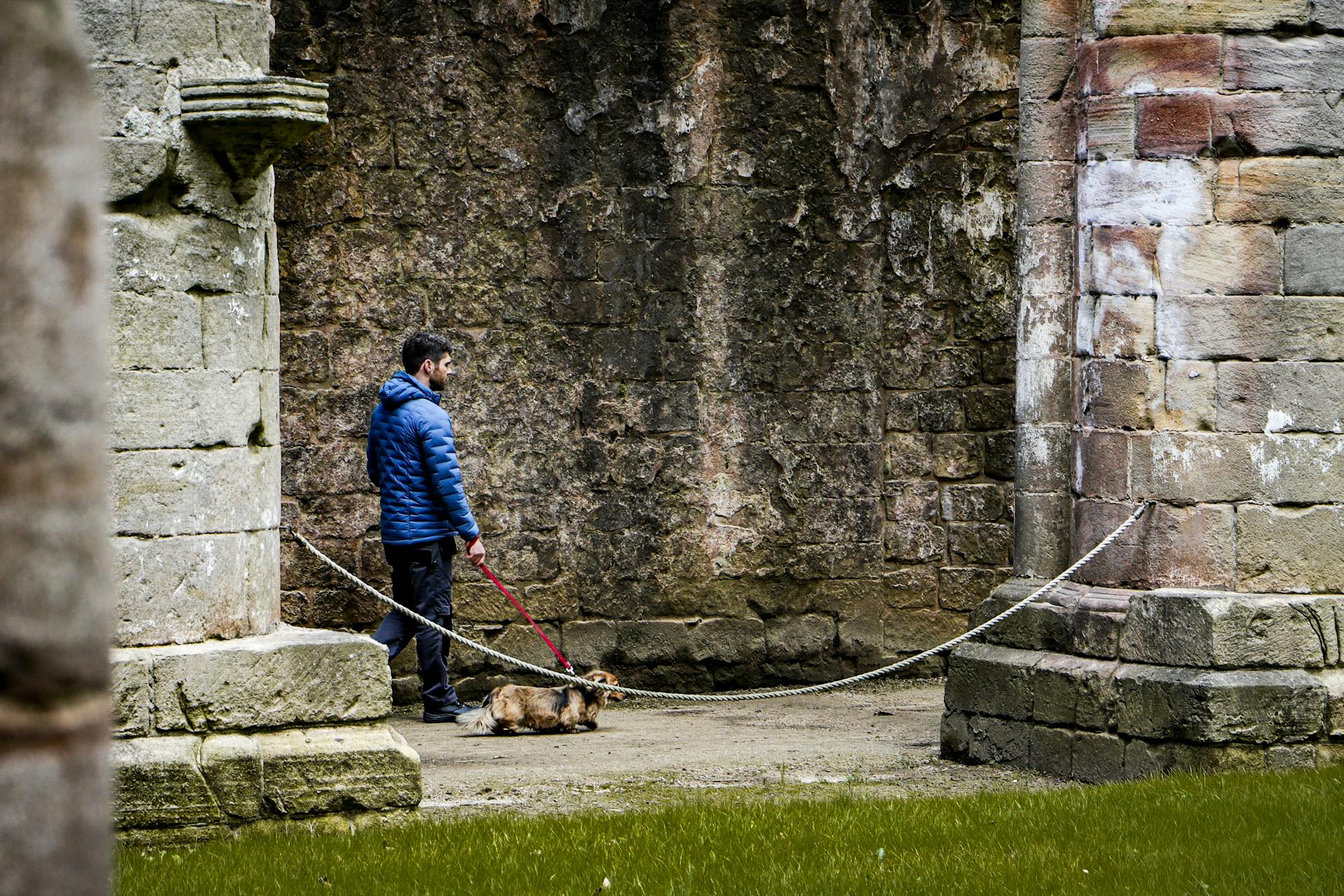
The Roman molossus, or canis pugnax, was a powerful and agile breed that was used in battle. It was the progenitor of the modern-day Neapolitan mastiff and was known for its ability to withstand harsh climates and travel long distances.
Tying buckets of flaming oil to the backs of war dogs and sending them to the front lines was a common practice among the Romans. These dogs were called pirifers or fire bearers.
Pets
Dogs played an important role in ancient Roman society, bred for various purposes such as pets, guardians, herding, hunting, and war.
They were highly valued for their virtues, including loyalty, obedience, unconditional affection, nobility of soul, great intuition, and spontaneity in expressing emotions.
Pliny the Elder considered the dog "man's most faithful companion".
In Roman Britain, evidence from zooarchaeological research suggests that domestic dog ownership was prevalent, with human care for dogs evident in the analysis of bones left behind.
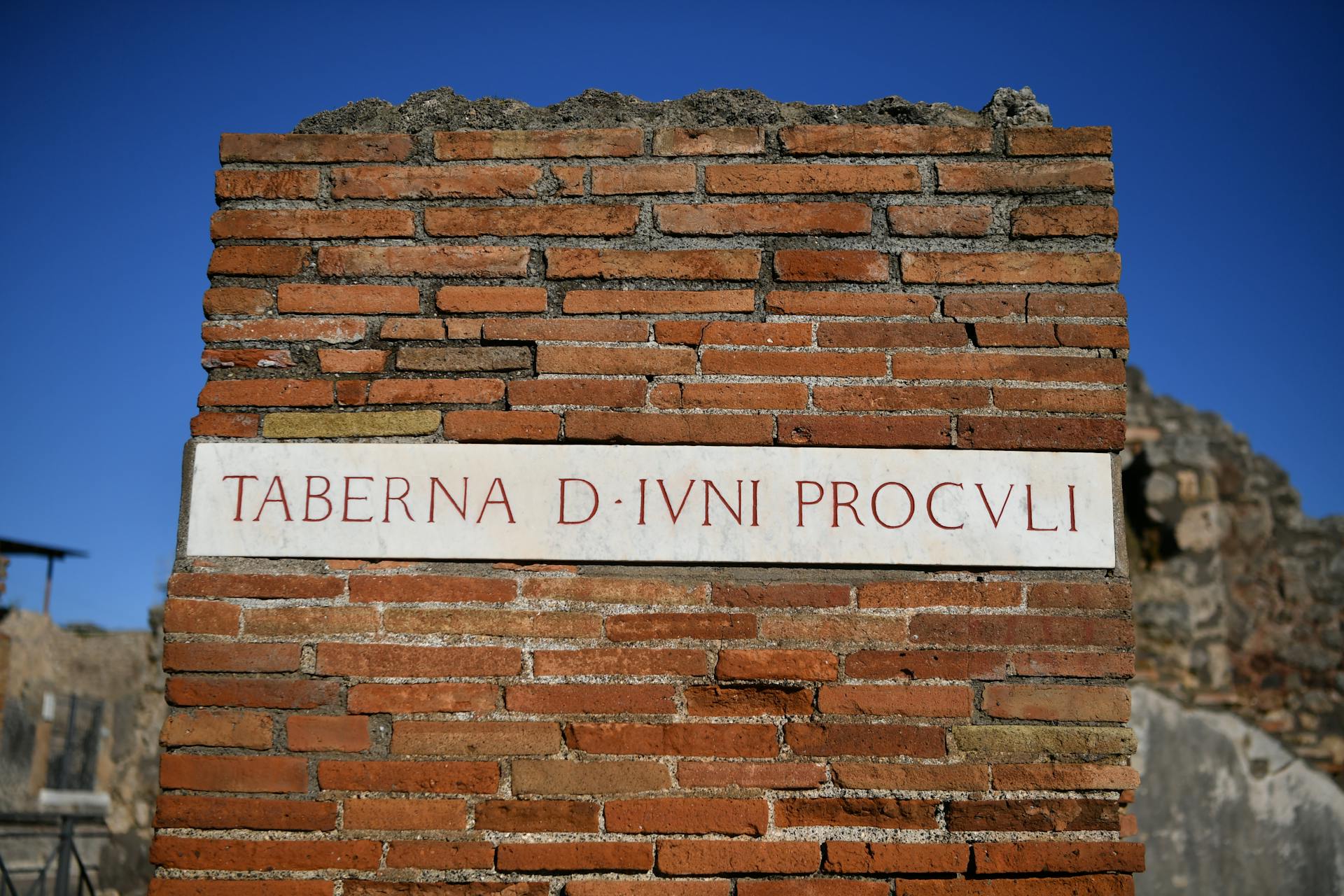
Canine burials were rare in Roman Britain, making it difficult to measure the relationship between the colony's inhabitants and domestic dogs.
The remains of a dog in La Bourse, Marseille, showed significant dental issues, including the loss of maxillary teeth and unusual calculus buildup, indicating it would have needed human care to eat.
The term "pet" is problematic in the context of Rome, as work animals and pets were often the same thing in antiquity, and using it projects modern interpretations onto the ancient world.
A more reflective term for the role of dogs in Roman Britain is "personal animal", as suggested by MacKinnon.
Related reading: Long Term Dog Boarding San Antonio
Frequently Asked Questions
What animals were in Roman Britain?
In Roman Britain, larger cattle, sheep, pigs, horses, and chickens were present, indicating improved husbandry practices. These larger animals contributed to enhanced meat production in the region.
Sources
- https://weirditaly.com/2022/08/19/dogs-in-ancient-rome-breeds-uses-epitaphs-and-facts/
- https://en.wikipedia.org/wiki/Dogs_of_Roman_Britain
- https://kids.kiddle.co/Dogs_of_Roman_Britain
- https://military-history.fandom.com/wiki/Dogs_of_Roman_Britain
- https://medium.com/@theartfulhistorian/protectors-companions-hunters-dogs-in-ancient-rome-e64ce11a89a6
Featured Images: pexels.com


